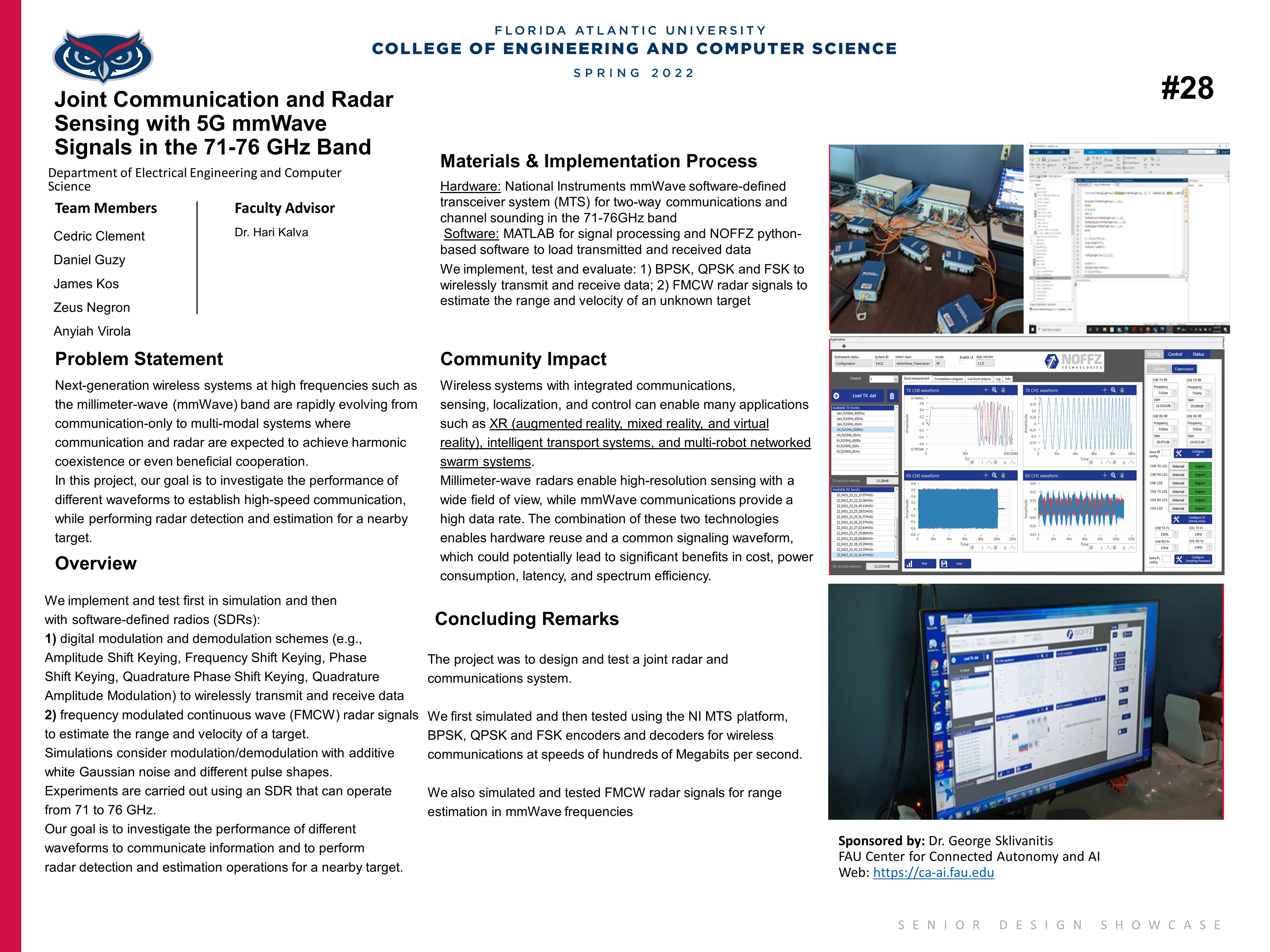Joint Communication and Radar Sensing with 5G mm Wave Signals in the 71-76GHz Band
Department of Electrical Engineering and Computer Science
Overview
Next generation wireless systems at high frequencies, such as the millimeter-wave band, are rapidly evolving from communication-only to multi-modal systems where communication and radar are expected to achieve harmonic coexistence or even beneficial cooperation. In this project, we implement and test first in simulation and then with software-defined radios (SDRs): 1) digital modulation and demodulation schemes (e.g., Amplitude Shift Keying, Frequency Shift Keying, Phase Shift Keying, Quadrature Phase Shift Keying, Quadrature Amplitude Modulation) to wirelessly transmit and receive data; 2) frequency modulated continuous wave (FMCW) radar signals for estimating the range and velocity of an unknown object. Simulations consider modulation/demodulation with additive white Gaussian noise and different pulse shapes. Experiments are carried out using an SDR that can operate from 71 to 76 GHz. Our goal is to investigate the performance of different waveforms to communicate information and to perform radar detection and estimation operations for a nearby target.
Community Benefit: Wireless systems with integrated communications, sensing, localization, and control can enable many applications such as XR (augmented reality, mixed reality, and virtual reality), intelligent transport systems, and multi-robot networked swarm systems. Millimeter-wave radars enable high-resolution sensing with a wide field of view, while millimeter wave communications provide a high data rate. The combination of these two technologies enables hardware reuse and a common signaling waveform, which could potentially lead to significant benefits in cost, power consumption, latency, and spectrum efficiency.
Team Members
Sponsor
|
FAU Center for Connected Autonomy and Artificial Intelligence |
